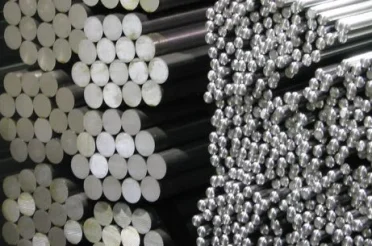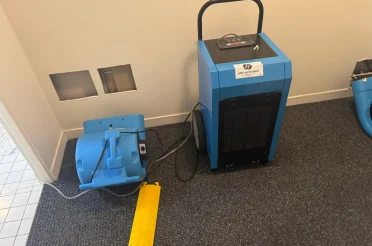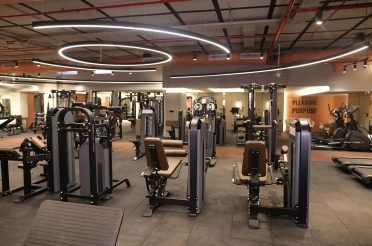What Factors Should You Consider When Designing Custom Pallet Racks?

Designing custom pallet racking products requires careful planning to ensure maximum efficiency, safety, and adaptability in your warehouse. Every business has unique storage needs, and choosing the right design directly affects your operational success. Before investing in a new racking system, it’s crucial to assess specific factors that can influence your choice. Below, we break down the key elements to consider when designing your pallet racking solution.
What Type of Inventory Will You Store?
Understanding your inventory is the first and most important step in designing custom pallet racking products. Different items require different storage methods. Are you storing heavy industrial equipment, lightweight boxes, perishable goods, or hazardous materials? Each product type will dictate the racking system needed.
For example, storing large, heavy items might require drive-in racks or double deep pallet racking, while smaller items may be better suited to selective racking or carton flow racks. Accurately identifying your inventory’s weight, shape, and size helps in building a structure that is both safe and efficient.
How Much Space Do You Have?
Warehouse space plays a major role in designing a pallet racking layout. Before deciding on a racking system, analyze the total usable area, including ceiling height and floor space. Vertical space is often underutilized, so consider racks that can extend upward if your warehouse has high ceilings.
Space planning also helps ensure clear aisles for equipment like forklifts and pallet jacks. Using custom pallet racking products allows you to tailor the rack dimensions to fit your available space perfectly, avoiding wasted storage areas and maximizing your investment.
What Are Your Load Capacities?
It’s vital to calculate the load capacities your racks will need to handle. Overloading racks can result in safety hazards, product damage, and even structural collapse. Every component — from beams to uprights — must support your intended weight per level and per bay.
Using professional services like Rack Builders Inc ensures your racking system complies with load capacity standards and OSHA regulations. Their engineers assess your load requirements and deliver structurally sound, high-performance racking systems that match your business needs.
How Will You Access the Inventory?
The accessibility of your stored goods impacts daily operations and overall warehouse efficiency. If your warehouse uses a first-in, first-out (FIFO) method, you may want to consider systems like pallet flow racking. On the other hand, if last-in, first-out (LIFO) works better for your workflow, drive-in racking could be a better fit.
The type of forklifts or lifting equipment you use also matters. Ensure that your racking design allows for safe and easy maneuvering of all handling equipment. Custom pallet racking products offer the flexibility to integrate such considerations from the start of the design phase.
What Safety Features Should Be Included?
Safety must be a top priority in any warehouse operation. Customizing your pallet racking gives you the opportunity to integrate safety features such as column protectors, wire decking, pallet stops, and rack guards. These additions help prevent accidents, reduce product loss, and prolong the life of your racking system.
It’s also essential to comply with local and national safety regulations. Companies like Rack Builders Inc are experts in designing racking systems that meet or exceed industry safety standards, providing peace of mind for warehouse managers and employees alike.
What Is Your Budget for Racking?
Budget will naturally influence your racking design. While custom solutions may have a higher initial cost compared to standard systems, they offer long-term savings by optimizing space, reducing labor, and minimizing damage to goods.
When planning your budget, consider both the upfront installation and the long-term maintenance costs. Custom pallet racking products offer better durability, scalability, and efficiency, making them a cost-effective choice for growing operations.
How Scalable Should Your System Be?
Your business might be expanding, so think about future scalability when designing your racking system. Can your racking solution grow with your business? Will it accommodate new products or changes in logistics?
Modular designs allow you to reconfigure or expand your storage system easily. With custom pallet racking products, you can future-proof your warehouse by integrating flexible components that adjust to evolving inventory needs.
What Is the Environment of Your Facility?
The working environment greatly affects racking design. For instance, if your facility is refrigerated or exposed to high humidity, rust-resistant or galvanized materials are a must. In high-temperature zones, heat-resistant materials should be used.
Environmental factors like lighting, ventilation, and cleanliness should also be considered. Custom-designed racking systems can be tailored to withstand harsh environments while maintaining structural integrity and usability.
How Will You Ensure Easy Maintenance?
Maintenance is key to extending the lifespan of your racking system. Designing racking that’s easy to inspect, repair, or replace will save time and costs down the line. Choose racking materials that are resistant to wear and tear, and opt for modular parts that can be swapped out if damaged.
Custom pallet racking products can include features like boltless assembly or quick-release components to simplify routine maintenance. This not only ensures safety but also minimizes operational disruptions.
Why Choose Professional Help for Custom Racking Design?
Designing pallet racking isn’t just about stacking shelves. It requires deep knowledge of materials, safety codes, equipment compatibility, and operational workflow. Partnering with experienced providers like Rack Builders Inc gives you access to engineering expertise, tailored solutions, and guaranteed compliance with industry standards.
Their team works closely with clients to understand specific business challenges and deliver custom racking systems that increase efficiency, safety, and ROI.
Conclusion: Optimize Warehouse Operations with Smart Racking Design
Creating an effective warehouse begins with the right racking system. By considering key factors such as inventory type, space availability, load requirements, accessibility, safety, budget, scalability, and environment, you can design custom pallet racking products that deliver maximum value.






